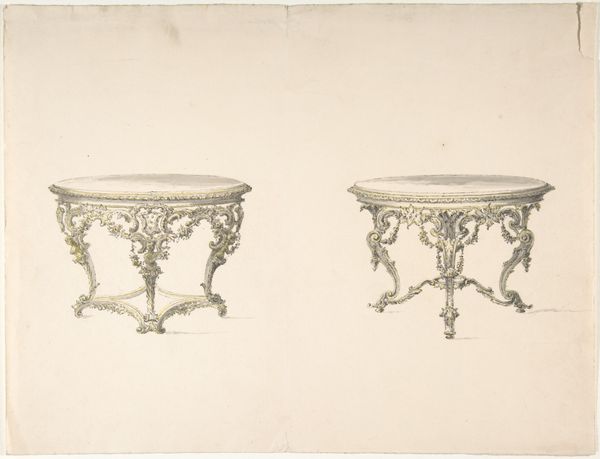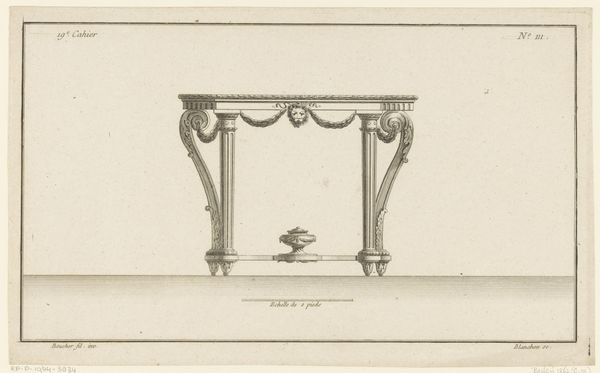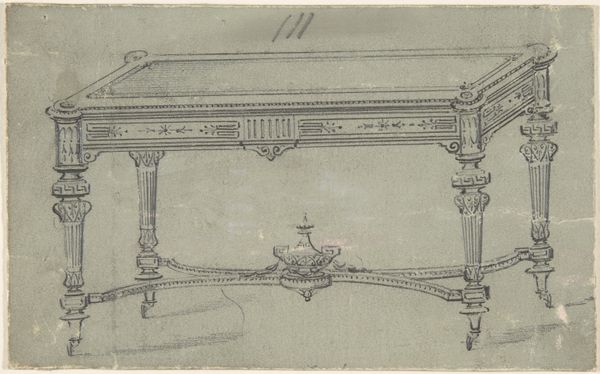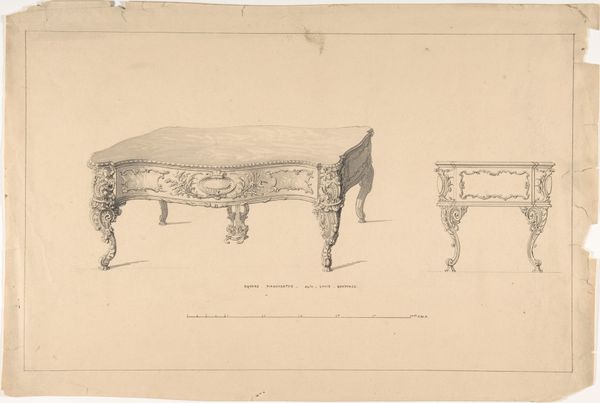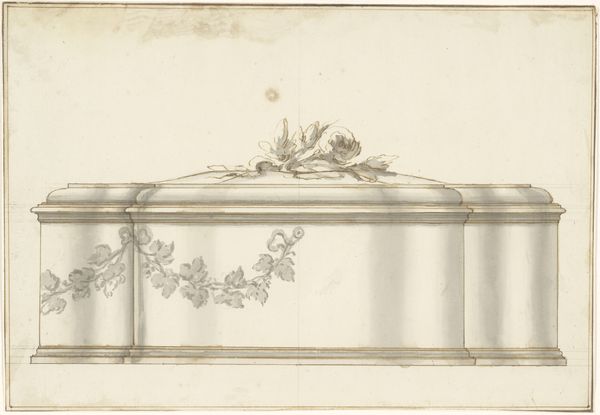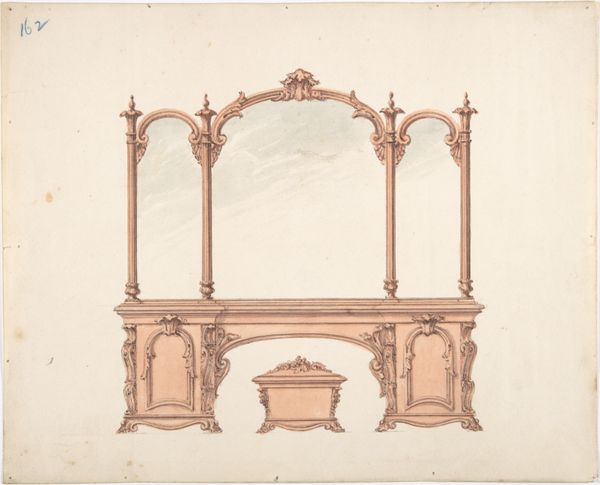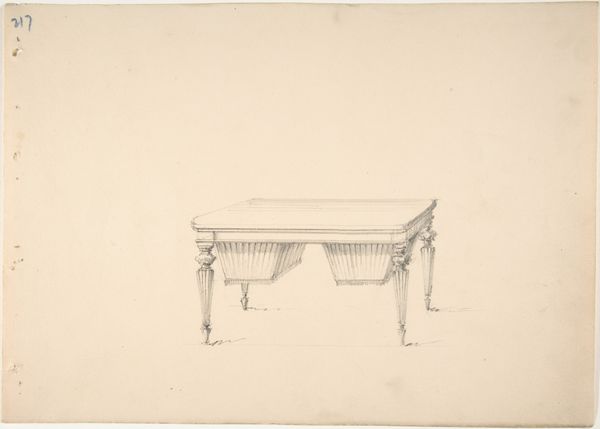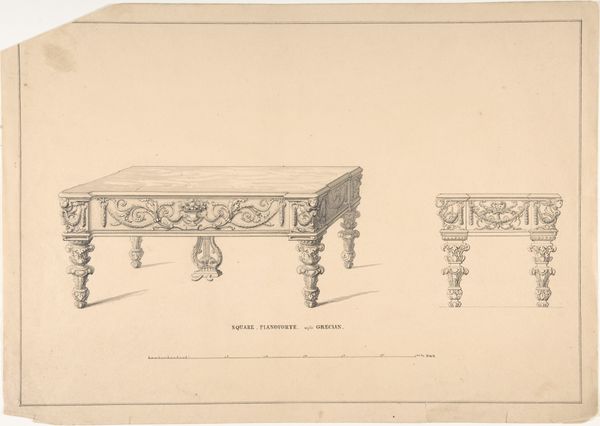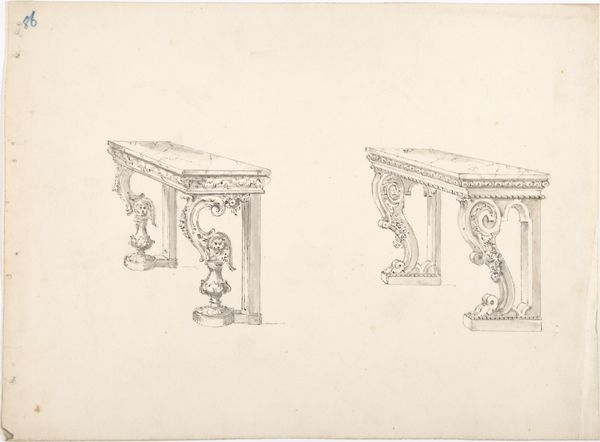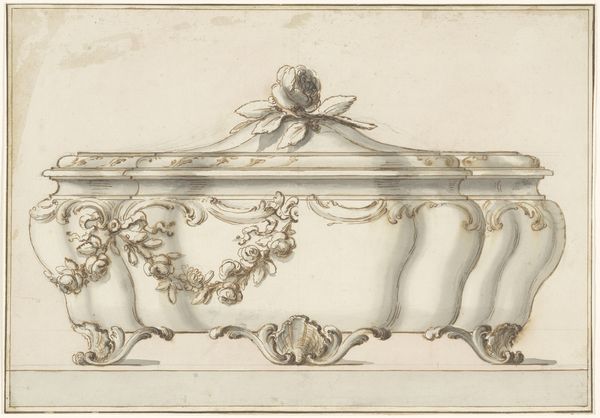
drawing, print, paper, ink
#
drawing
#
water colours
#
baroque
# print
#
figuration
#
paper
#
ink
#
watercolor
Dimensions: sheet: 7 1/16 x 9 3/16 in. (18 x 23.4 cm)
Copyright: Public Domain
Editor: Here we have a design for a table with ornate legs, dating back to the 17th century, currently housed at the Met. It’s an ink and watercolor drawing on paper, and what strikes me most is just how elaborate the ornamentation is, especially compared to the very simple table top. What's your take on this? Curator: It's fascinating to consider such designs within the context of the Baroque period, where art served as a powerful tool of visual rhetoric. Think about the social function of furniture like this. Who would have owned it? Editor: Probably someone very wealthy, right? Aristocracy? Curator: Precisely. Furniture during this era wasn't just functional; it was a symbol of status, a visual declaration of wealth and power. These ornate legs aren't merely decorative; they’re practically shouting about the owner's position in society. The elaborate ornamentation demonstrates patronage of the arts and displays social prominence. Editor: So, it's less about comfort and more about sending a message? Curator: It’s a complex equation. Certainly, there's a degree of function, but the aesthetic choices amplify the statement being made about power and taste. How might the display of such a piece affect the public's perception of those in power? Editor: I suppose it would further highlight the gap between the wealthy and the working class, almost creating a sense of aspiration mixed with, maybe, resentment. Curator: Exactly. Now consider where such a table might be placed within a grand house, and how the architecture, paintings, and even the clothing of the people around it all contribute to a carefully constructed image. Editor: It’s interesting to consider how this drawing isn’t just a design, but also a piece of social commentary in itself. I had been missing that before! Curator: Yes, art provides a lens through which we can see both intentionality and social reactions, across time.
Comments
No comments
Be the first to comment and join the conversation on the ultimate creative platform.
